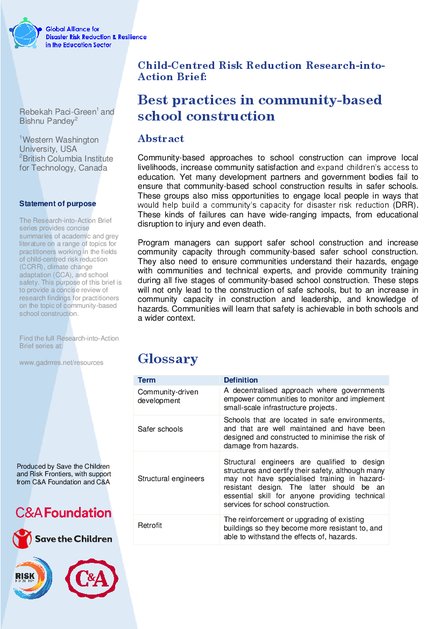
This brief explores how community-based approaches to school construction can improve local livelihoods, increase community satisfaction and expand children’s access to education. Yet many development partners and government bodies fail to ensure that community-based school construction results in safer schools. These groups also miss opportunities to engage local people in ways that would help build a community’s capacity for disaster risk reduction (DRR).
These kinds of failures can have wide-ranging impacts, from educational disruption to injury and even death. Program managers can support safer school construction and increase community capacity through community-based safer school construction. They also need to ensure communities understand their hazards, engage with communities and technical experts, and provide community training during all five stages of community-based school construction. These steps will not only lead to the construction of safe schools, but an increase in community capacity in construction and leadership, and knowledge of hazards. Communities will learn that safety is achievable, not only in terms of schools, but in a wider context as well.
The Research-into-Action Brief series provides concise summaries of academic and grey literature on a range of topics for practitioners working in the fields of child-centred risk reduction (CCRR), climate change adaptation (CCA), and school safety.